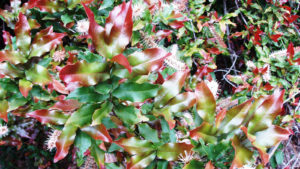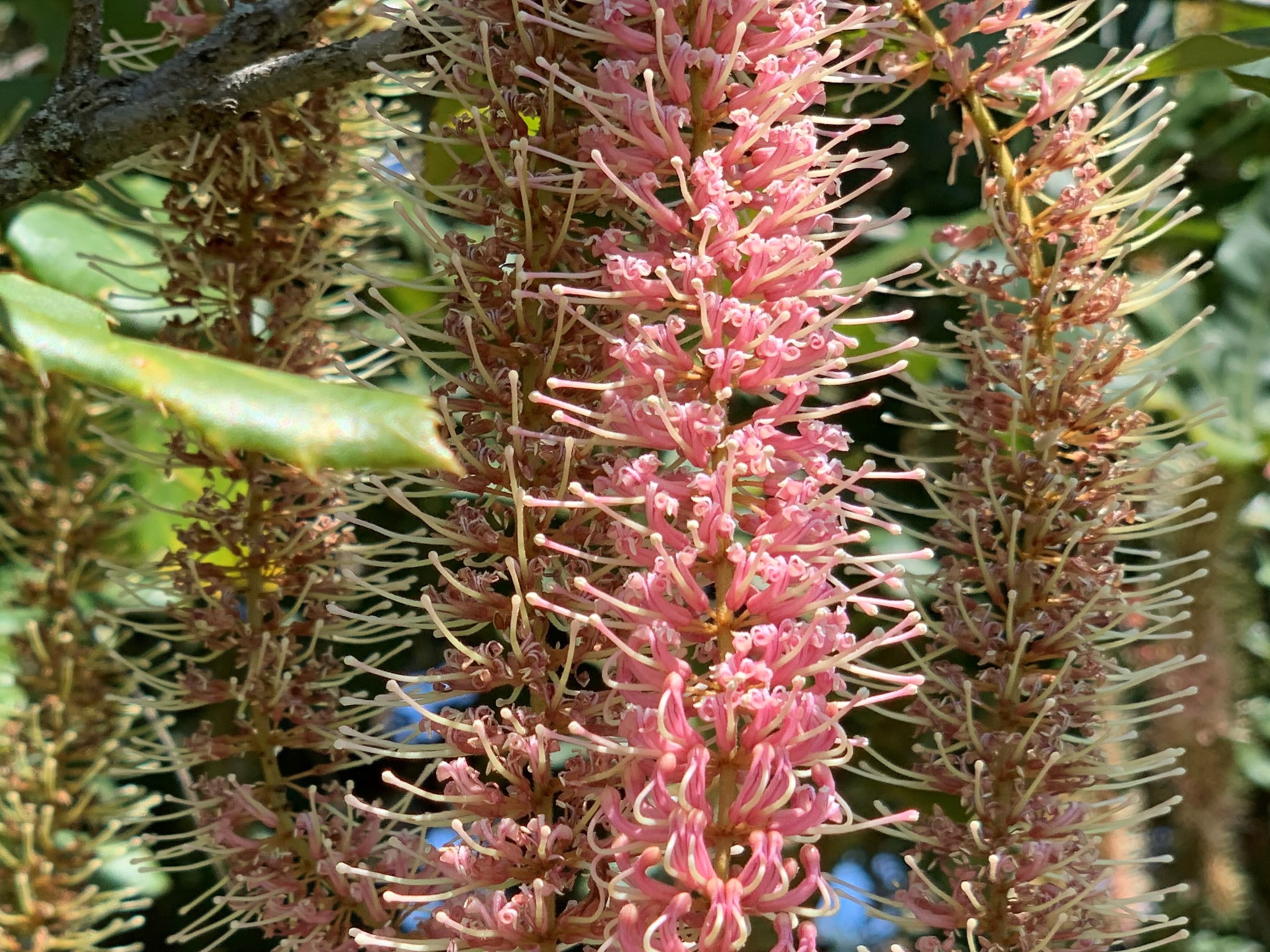Habitat loss and fragmentation is the biggest threat to long term survival of wild macadamias
In South East Queensland and New South Wales approximately 60% and 80% of Macadamia habitat respectively has been lost due to clearing to make way for a growing urban footprint.
This has resulted in small isolated clusters of Macadamia populations occupying rainforest fragments scattered across the landscape.
Fragmented habitats can become degraded quickly and are more vulnerable to weed invasion, grazing and wildfire.
Extensive clearing also limits the ability of large nuts to disperse, which may lead to inbreeding and loss of genetic diversity.

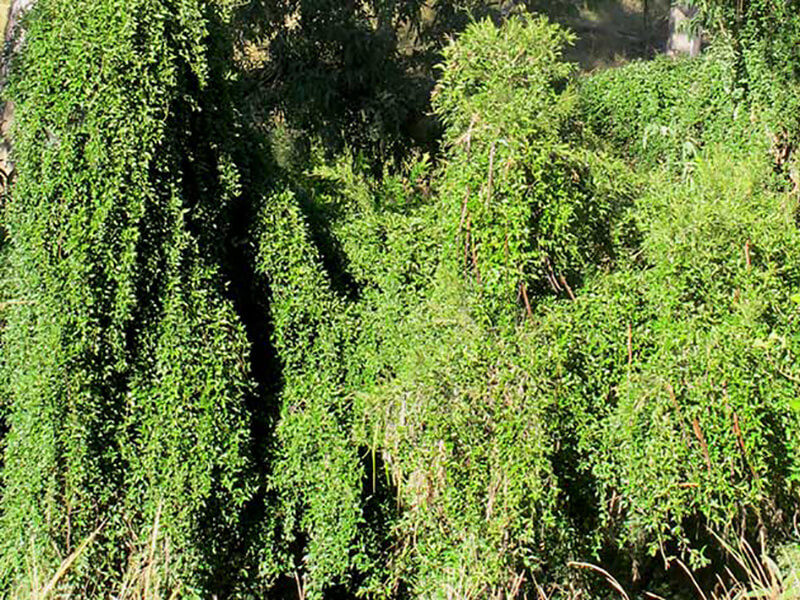
Weeds
Weeds are a significant threat to wild macadamias and their rainforest habitat.
Vine weeds in particular, such as Cat’s claw creeper and Madeira vine can spread quickly and smother and even kill large trees.
Other weeds such as Lantana, Asparagus fern and Coral berry are also common weeds in rainforest habitats, competing with wild macadamias and other native plants for resources.
In areas where high levels of clearing has occurred in the past, woody weeds such as Camphor laurel and Privet have become widely established.
Weeds can be managed in a number of ways using physical, chemical and/or biocontrol methods.The best method of control will depend on resources available, accessibility, how far the weed has spread and the type of landscape (e.g. flat vs hilly).
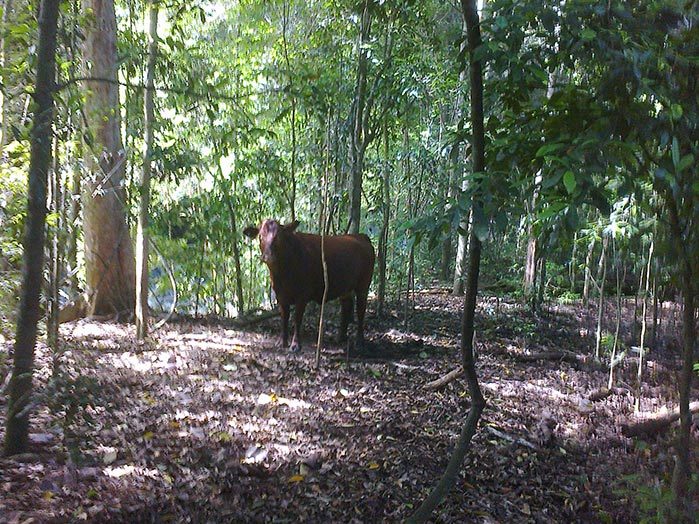
Grazing
Grazing of cattle occurs in many areas that contain patches of rainforest, which are used as shade during hot weather.
Unmanaged, it can lead to soil compaction, changing of the dynamics of the ground layer and trampling which reduces the chances of new seedlings becoming established.
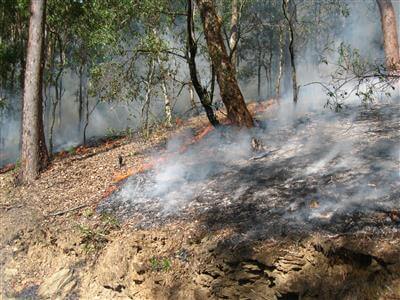
Fire
Fire is normally not a significant risk to intact rainforest habitats.
However remaining rainforest pockets with wild macadamias are in highly modified landscapes, often with flammable weeds at their edge.
Similarly, remaining rainforest patches located on ridges with grass or weed areas down slope are vulnerable to fire, particularly in the drier parts of Macadamia’s range.
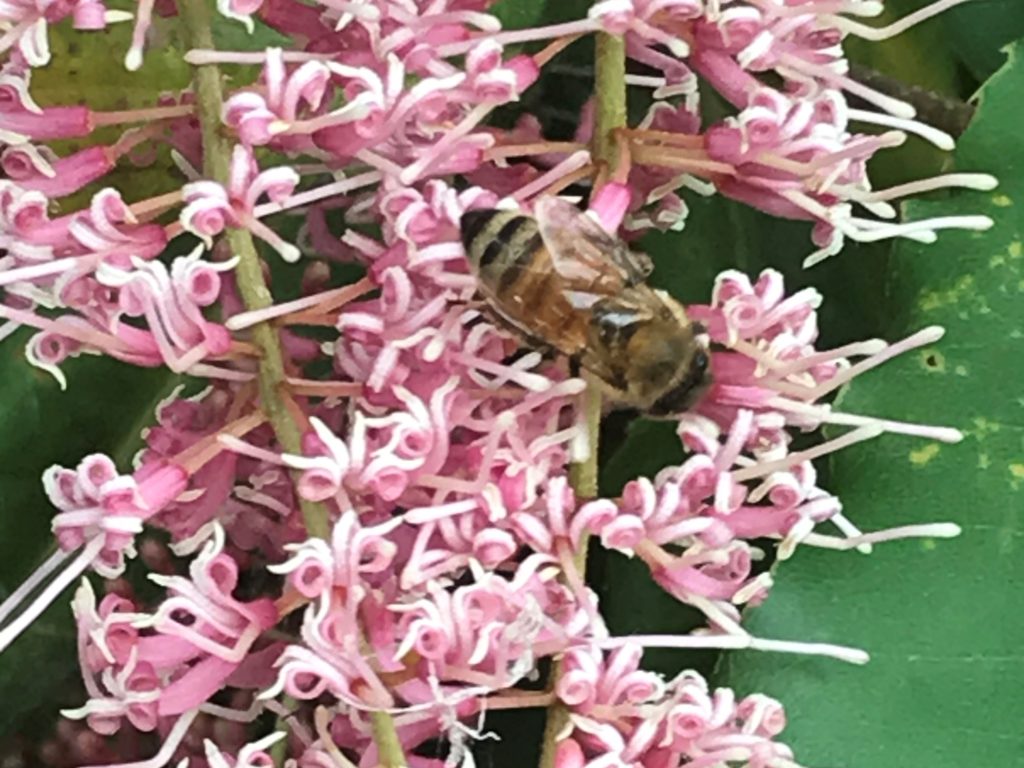
Photo by Brice Kaddatz
Climate change
Climate change is predicted to result in higher temperatures and more variable rainfall in areas where wild Macadamias occur.
These changes will place Macadamias under increased environmental stress and reduce the opportunities for reproduction, eventually leading to decline in numbers in many populations.
The timing of flowering and seed maturation of Macadamias and the lifecycles of insects that pollinate Macadamias is also likely to be impacted.
Climate change may also exacerbate existing threats such as fire and weeds.
Genetic diversity is vitally important in helping macadamia species adapt to changing conditions and new diseases.
Therefore continual access to new genetic material, such as from wild populations, is vital for the long-term continued productivity and improvement of the macadamia nut industry by offering growers and the industry access to genetic traits such as increased more resistant and/or which grow better under changing environmental conditions.

